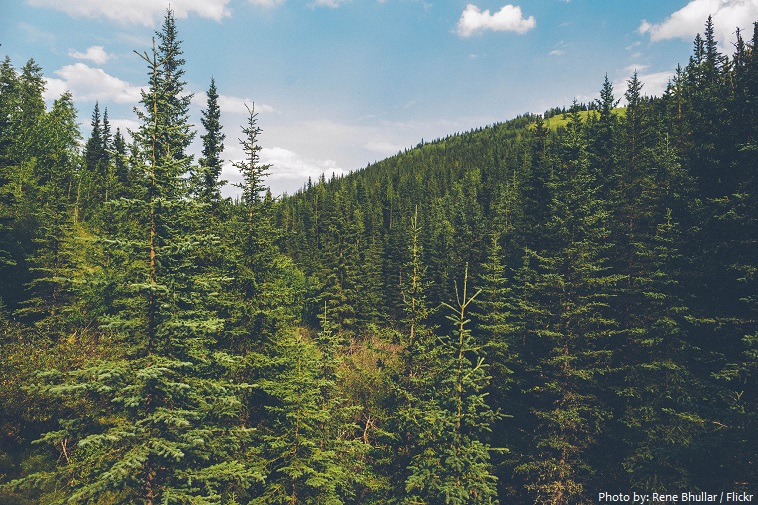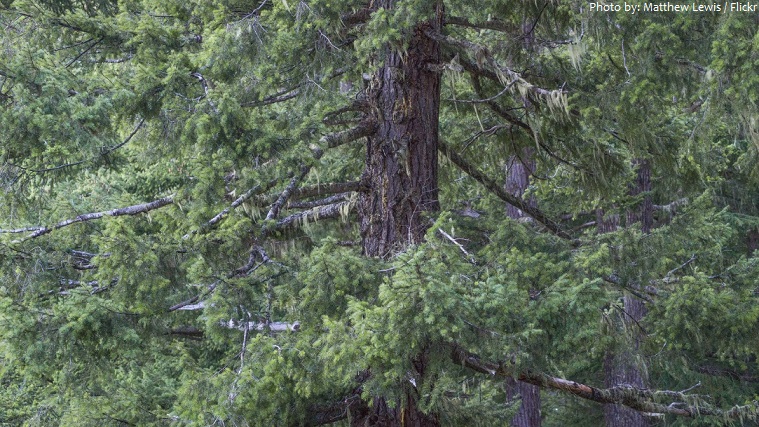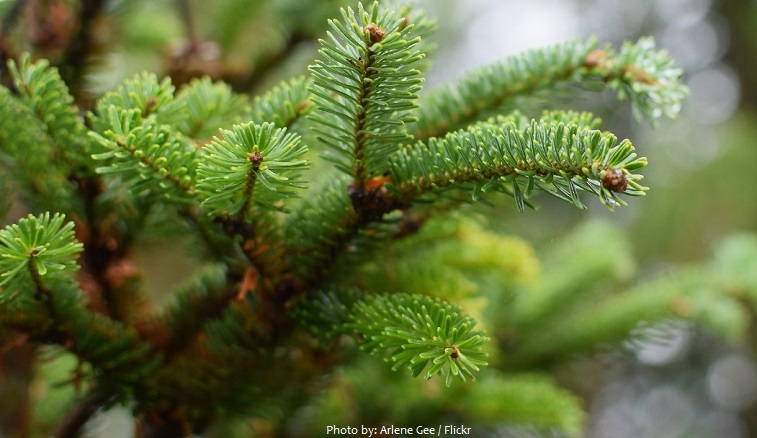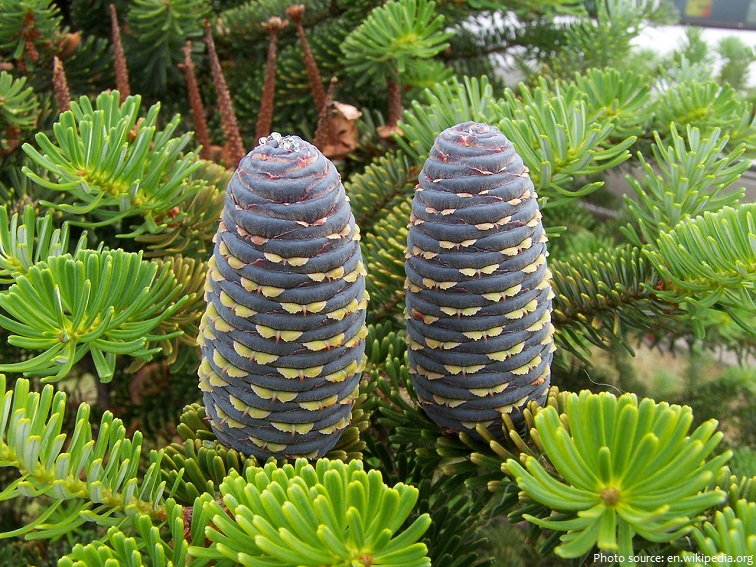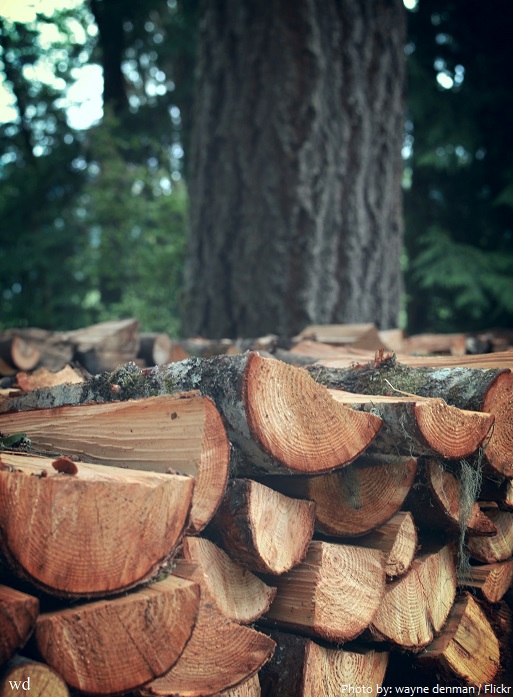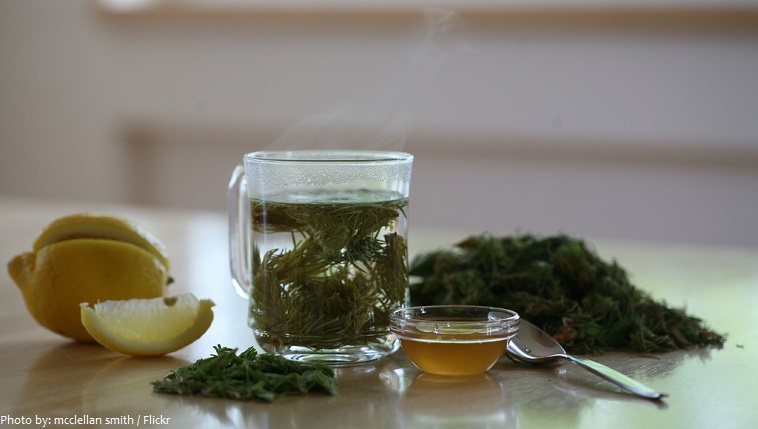Firs are evergreen coniferous trees that belongs to the genus Abies of the family Pinaceae.
There are about 56 species of fir in the world.
They are found through much of North and Central America, Europe, Asia, and North Africa, occurring in mountains over most of the range.
Firs are long-lived, on average achieving reproductive maturity at 20 years, with an average life-span of 60 years. Fir trees in excess of 400 years old have been recorded in several species, and noble firs 600 to 700 years old are known.
They are large trees, reaching heights from 10 to 80 meters (33 to 262 feet) tall and trunk diameters from 0.5 to 4 meters (1 ft 8 in to 13 ft 1 in) when mature.
Firs grow best in areas of high elevation in well-drained, moist soil. Full sunlight and plenty of water are
also necessary for fir tree growth.
Old fir trees have thick, ridged bark, and younger firs have thin, smooth bark.
Firs are uninodal, producing one whorl of branches each year, from buds at the tip of the year’s new shoot. For example, if the tree was 50 years old it would have 50 branch whorls.
Firs can be distinguished from other members of the pine family by the unique attachment of their needle-like leaves to the twig by a base that resembles a small suction cup.
The fir tree cones are softer than other coniferous trees and come apart at the end of the season to spread their seeds. They also grow upwards instead of hanging down.
Cylindrical cones are 5–25 centimeters (2–10 inches) long. Mature cones are usually brown, young in summer can be green, yellow, purple, blue or dark purple-blue.
Firs are monoecious (both sexes) and produces female cones high in the crown, and clusters of male cones in a zone below.
Pines produce resin that flows from the injured bark. Unfortunately, resin is highly flammable and it
facilitates spreading of the forest fire.
Identification of the different species is based on the size and arrangement of the needle-like leaves, the size and shape of the cones, and whether the bract scales of the cones are long and exserted, or short and hidden inside the cone.
Nordmann fir, noble fir, Fraser fir and balsam fir are popular Christmas trees, generally considered to be the best for this purpose, with aromatic foliage that does not shed many needles on drying out.
Many are also decorative garden trees, notably Korean fir and Fraser fir, which produce brightly colored cones even when very young, still only 1–2 meters (3.3–6.6 feet) tall.
Wood of most firs is considered unsuitable for general timber use, and is often used as pulp or for the
manufacture of plywood and rough timber. It is also used to make stuffing for pillows and mattresses in some countries.
Like so many popular essential oils, fir needle essential is extracted through a process of steam distillation from fir needles. The needles are the most important part of this plant, as that is where the active ingredients and powerful chemical compounds are located.
In aromatherapy uses, as an essential oil, Fir is beneficial for coughs, colds, flu, arthritis, muscle aches
and rheumatism.
It’s properties include being an antiseptic, antitussive, Deodorant, disinfectant and expectorant.
Abies spectabilis or Talispatra is used in Ayurveda as an antitussive drug.
A tea made by green fir needles in boiling water is high in vitamins A and C.
Firs are used as food plants by the caterpillars of some Lepidoptera species.
The root system of the fir tree also helps to prevent soil erosion.
Like other evergreens, fir trees are associated with protection and spirituality in many Native American tribes. Fir branches are used for purifying and warding off ghosts in some Salish and other Northwest Indian rituals. Plains Indian tribes commonly burn fir needles as incense, and northern Algonquian tribes bundled spruce and fir needles into sachets or herbal pillows to protect against illness.
One of the nine sacred woods of used for a sabbat fire the Druids held the fir in high esteem. It is a symbol of honesty, truth and forthrightness because of the way it grows on the “straight and narrow.” The trunk of the fir reminds us of a tall straight pillar of strength, a symbolic tower of truth.
Douglas firs are not true firs, being of the genus Pseudotsuga.
Fir Tree Appreciation Day is June 18.
